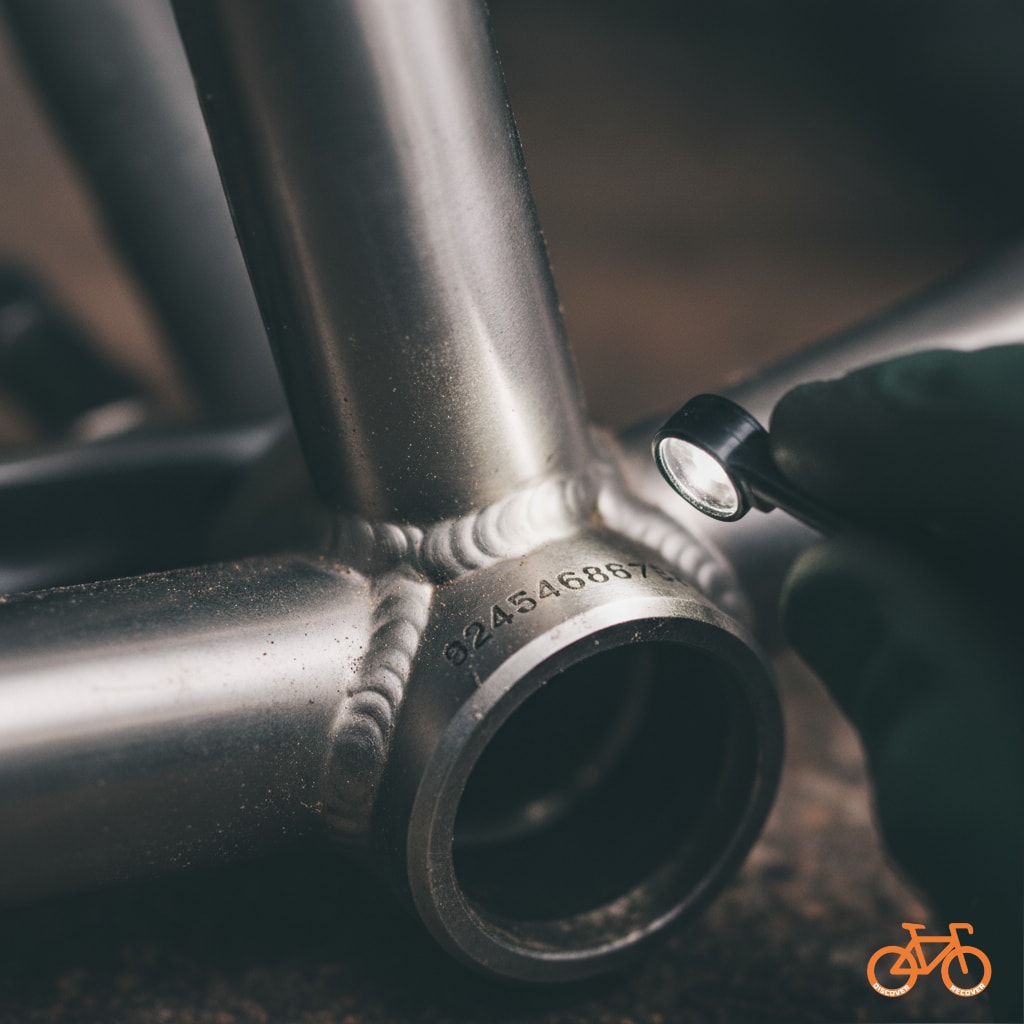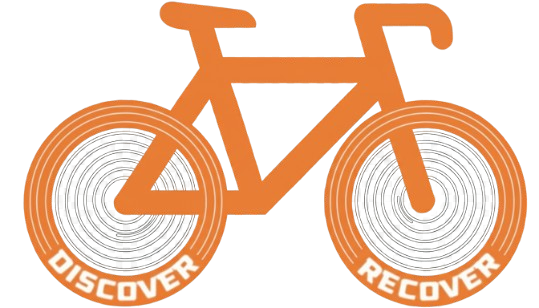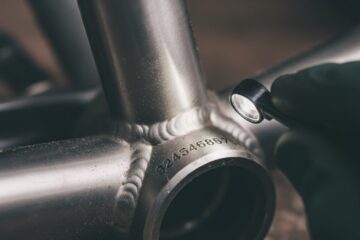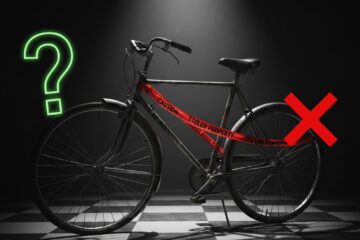
Your Bicycle’s Fingerprint: A Guide to Frame Numbers (Serial Numbers)
What Exactly Is a Bicycle Frame Number?
At its core, a bicycle frame number is a unique alphanumeric code assigned to your bike by its manufacturer. It’s essentially the vehicle identification number (VIN) for your bicycle. This code is permanently stamped or etched into the bike’s frame, making it a robust and reliable identifier that cannot be easily removed or altered.
While “serial number” is a commonly used term, “frame number” is often more precise, emphasizing its integral connection to the main structure of the bicycle.
Why Is Your Frame Number So Important?
The significance of your bike’s frame number cannot be overstated. It serves multiple critical functions:
- Proof of Ownership: In the unfortunate event of theft, your frame number is the single most important piece of evidence you have to prove the bike belongs to you. Without it, recovering a stolen bike is incredibly difficult.
- Theft Recovery: Law enforcement agencies and online bike registries (like Bike Index) use frame numbers to track and identify stolen bicycles. If your bike is found, the serial number is the key to reuniting you with it.
- Insurance Claims: Most insurance policies will require your bike’s frame number when you file a claim for theft or damage. It’s essential for verifying the insured item.
- Warranty Claims: Manufacturers often use the frame number to track the bike’s production date and model, which is vital for processing warranty claims.
- Recalls and Safety Alerts: In rare cases, a manufacturer might issue a recall for a specific batch of bikes. The frame number helps identify which bikes are affected.
- Resale Value and Authentication: For high-end or vintage bikes, the frame number can help authenticate its origin and year of manufacture, influencing its resale value.
Where to Find Your Bicycle’s Frame Number
The most common location for a bicycle frame number is the underside of the bottom bracket. This is the cylindrical part of the frame where the pedal cranks attach.
Key Locations to Check:
- Underneath the Bottom Bracket: This is the most common place. Flip your bike upside down (or lean it against a wall) and look at the metal shell between the crank arms.
- Rear Dropouts: Sometimes found on the vertical metal plates where the rear wheel attaches to the frame.
- Head Tube: Occasionally, it might be on the front of the bike, just below the handlebars, where the fork passes through the frame.
- Seat Tube: Less common, but sometimes located on the back or side of the tube that holds the seat post.
- Chain Stays: The tubes that run from the bottom bracket back to the rear wheel.
What to Look For:
- Stamped or Etched: The number is usually stamped directly into the metal frame. It might be raised or indented.
- Sticker (Less Common/Reliable): While some manufacturers use stickers, these are less reliable as they can be removed or damaged. Always prioritise a number stamped into the frame itself.
- Length: Frame numbers typically range from 6 to 10 characters, but some can be longer or shorter. They can be a mix of letters and numbers.
Pro-Tip for Older Bikes: On older or heavily used bikes, the frame number might be obscured by dirt, grease, or paint. You might need a flashlight and a rag to clean the area thoroughly.
Deciphering Your Frame Number: What Do the Digits Mean?
While there isn’t a single universal standard for bicycle frame numbers, many manufacturers follow internal conventions.
Common Elements You Might Find:
- Manufacturer Code: Often, the first few characters identify the brand or even the factory where the bike was made.
- Date Code: Many numbers incorporate a code for the year and/or month of manufacture. This could be a simple “08” for 2008, or a more complex alphanumeric sequence where a letter corresponds to a specific year.
- Batch or Production Run: Identifiers that link your bike to a specific production run.
- Sequential Number: The latter part of the number is often a simple sequential count, indicating which number in that specific batch or year your bike was.
Example (Hypothetical):
- XYZ12345678
- XYZ: Manufacturer code
- 12: Year of manufacture (e.g., 2012)
- 345678: Sequential production number
How to Research Your Specific Number:
- Manufacturer’s Website: Many reputable bike brands provide tools or FAQs on their websites to help you decipher their serial numbers.
- Online Forums: Enthusiast forums specific to your bike brand or type of bike can be invaluable resources.
- Bike Shop Expertise: Your local bike shop often has experience with various brands and might be able to offer insight.
The Absolute Must-Do: Register Your Bike!
Finding your frame number is only the first step. The next, and arguably most critical, action is to register your bike with its frame number.
Why Register?
- Dramatically Increases Recovery Chances: Registered bikes are significantly more likely to be recovered after theft. Police and community groups use these databases daily.
- Creates a Public Record: If your bike is stolen, its information, including the frame number, can be quickly distributed to a wide network, alerting potential buyers and law enforcement.
- Deters Thieves (Potentially): While not a guarantee, a registered bike with visible registration stickers can sometimes be less appealing to thieves looking for an easy, untraceable score.
Where to Register Your Bike:
- Bike Index (Highly Recommended International): A free, global, non-profit bicycle registration service. It’s the most widely used and effective.
- National Bike Registries: Many countries have their own national registries (e.g., 529 Garage in North America, BikeRegister in the UK).
- Local Police Departments: Some local law enforcement agencies maintain their own voluntary bike registration programs.
What to Do IMMEDIATELY After a Bike Theft
If the unthinkable happens and your bike is stolen, having your frame number at hand is paramount.
Your Action Plan:
- Report to Police: File a police report immediately. You MUST provide the frame number. Without it, the report is almost useless for recovery efforts.
- Mark as Stolen on the StolenBikeRegister.com (and other registries): Update your bike’s status to “stolen” on any registry you’ve used. Provide all details, including photos.
- Share on Social Media: Post clear photos and the frame number on local cycling groups and community forums.
- Use TraceLock: To watch secondhand online marketplaces.
The Takeaway: Know Your Number!
Your bicycle’s frame number is its identity. It’s the silent guardian against theft and the key to its history. Take five minutes today to find it, record it, and register it. This simple act is the single most effective way to protect your cycling investment and ensure that, should the worst occur, you have the best possible chance of being reunited with your cherished bike. Don’t be a statistic; be prepared!






